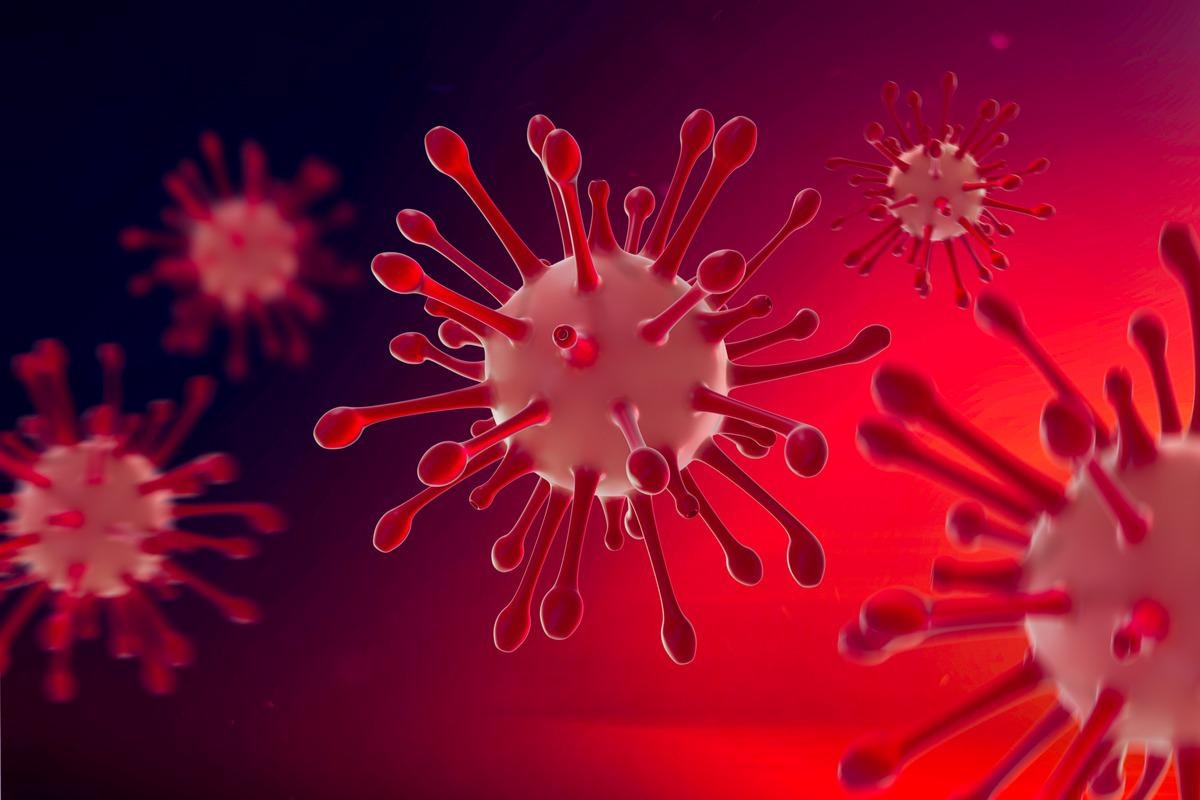In a study posted to the bioRxiv* pre-print server, a team of researchers analyzed the furin cleavage site (FCS) of the spike (S) protein of rodent coronavirus AcCoV-JC34 from the sub-genus luchacovirus, along with the other luchacoviruses, using in vitro and computational techniques. The natural wildlife host of the AcCoV-JC34 virus is Apodemus chevrieri (Chevrier’s field mouse).
 Study: In vitro and computational analysis of the putative furin cleavage site (RRARS) in the divergent spike protein of the rodent coronavirus AcCoV-JC34 (sub-genus luchacovirus). Image Credit: MIA Studio/Shutterstock
Study: In vitro and computational analysis of the putative furin cleavage site (RRARS) in the divergent spike protein of the rodent coronavirus AcCoV-JC34 (sub-genus luchacovirus). Image Credit: MIA Studio/Shutterstock
Several past studies have reported that AcCoV-JC34, unlike other luchacoviruses, has an alleged FCS within its S1 domain, close to the S1/S2 interface. Although its presence is considered highly unusual, an FCS is present in the Coronaviridae, a highly diverse virus family, with reservoir hosts in several wildlife species, including bats, birds, and small mammals such as rodents. Within the alphacoronavirus group, sub-genus luchacoviruses have phylogenetically distinct S proteins, which have not been adequately analyzed in the past.
The study
In the present study, the researchers constructed a phylogenetic tree of the ACoV-JC34 and the other known luchacoviruses based on S protein sequences. They also scanned several geographical locations and a number of rodent species to identify all the luchacoviruses discovered to date. A multiple sequence alignment was performed on AcCoV-JC34 S protein to compare its amino acid sequences with the prototype luchacovirus Lucheng Rn rat CoV (LRNV), severe acute respiratory syndrome coronavirus 2 (SARS-CoV-2), and a few other viral species.
The AcCoV-JC34 S protein was also structurally modeled to investigate the structural location of AcCoV-JC34 FCS. The furin cleavage prediction tools – PiTou and ProP – were used to determine whether furin processes the -RR-R- motif in AcCoV-JC34. A positive score for Pitou or a score above 0.5 for ProP indicates the likelihood of furin cleavage. Lastly, the researchers performed peptide cleavage assays using furin to test whether furin cleaves this site in vitro.
Results
Luchacoviruses formed a monophyletic group with 100% bootstrap support during the phylogenetic analysis, which indicates a common ancestor origin outside the alphacoronavirus family. Luchacoviruses clustered with rhinacoviruses, including Rhinolophus bat coronavirus HKU2, swine acute diarrhea syndrome coronavirus (SADS-CoV) and porcine enteric alpha coronavirus.
The sampled luchacoviruses were from a range of rodent hosts inhabiting the United Kingdom and China, indicating their widespread distribution. They formed a monophyletic group, further suggesting their long-term association with rodents.
The results of sequence alignment studies revealed that the -RR-R- motif present in AcCoV-JC34 does not align precisely with the S1/S2 motif of most coronavirus S proteins. However, it aligned with a potential secondary Middle East respiratory syndrome coronavirus (MERS-CoV) furin cleavage site (RSTRS).
The JC34 structural model studies showed the potential furin cleavage site (-RR-R-) was located in an exposed loop of the S protein, which increased its accessibility to proteases. However, the AcCoV-JC34 FCS was within a loop, upstream of the S1/S2 FCS found in other CoVs. In SARS-CoV-2, this upstream region aligned with a DQLTP sequence upstream of the expected S1/S2 cleavage site. SADS-CoV S protein was used for structural modeling because its structure is available in the Research Collaboratory for Structural Bioinformatics (RCSB) protein data bank and shows a relatively high identity of 41.5% with JC34. Based on the PiTou score, AcCoV-JC34 displayed a weakly predicted FCS, whose cleavage event could be experimentally determined.
The results of peptide cleavage assays revealed that trypsin cleaved all three peptides (from LRNV, AcCoV-JC34, and SARS-CoV-2) with varying efficiency. As expected, furin cleaved only the SARS-CoV-2 peptide and did not cleave the LRNV or JC34 peptides. The data indicate that AcCoVJC34 has a minimal furin cleavage sequence (R-X-X-R) which is not cleaved by furin when tested experimentally.
Conclusions
The study findings show that AcCoV-JC34 is the only luchacovirus containing a –RR-R- motif identical to the one found in SARS-CoV-2. However, further analysis shows that unlike for SARS-CoV-2, this –RR-R- motif of basic amino acids located in the AcCoV-JC34 FCS is not cleaved by furin, which suggests the presence of a progenitor sequence for the emergence of viruses from a distinct wildlife host. Notably, the -RR-R- motif in AcCoV-JC34 does not align precisely with the S1/S2 motif of S proteins of coronaviruses due to its atypical, exposed location above the S1/S2 loop.
The study also highlights the presence of a distinct proteolytic cleavage loop in the S protein of SARS-CoV-2, which is an evolutionary selection to up-regulate the FCS and create a disparate S protein, as seen with several highly transmissible variants.
*Important notice
bioRxiv publishes preliminary scientific reports that are not peer-reviewed and, therefore, should not be regarded as conclusive, guide clinical practice/health-related behavior, or treated as established information.
- Annette Choi, Deanndria T. Singleton, Alison E. Stout, Jean K. Millet and Gary R. Whittaker, (2021). In vitro and computational analysis of the putative furin cleavage site (RRARS) in the divergent spike protein of the rodent coronavirus AcCoV-JC34 (sub-genus luchacovirus). bioRxiv. doi: https://doi.org/10.1101/2021.12.16.473025 https://www.biorxiv.org/content/10.1101/2021.12.16.473025v1
Posted in: Medical Science News | Medical Research News | Disease/Infection News
Tags: Amino Acid, Bioinformatics, Coronavirus, Coronavirus Disease COVID-19, Diarrhea, in vitro, MERS-CoV, Peptides, Protein, Research, Respiratory, SARS, SARS-CoV-2, Severe Acute Respiratory, Severe Acute Respiratory Syndrome, Syndrome, Virus

Written by
Neha Mathur
Neha Mathur has a Master’s degree in Biotechnology and extensive experience in digital marketing. She is passionate about reading and music. When she is not working, Neha likes to cook and travel.
Source: Read Full Article


